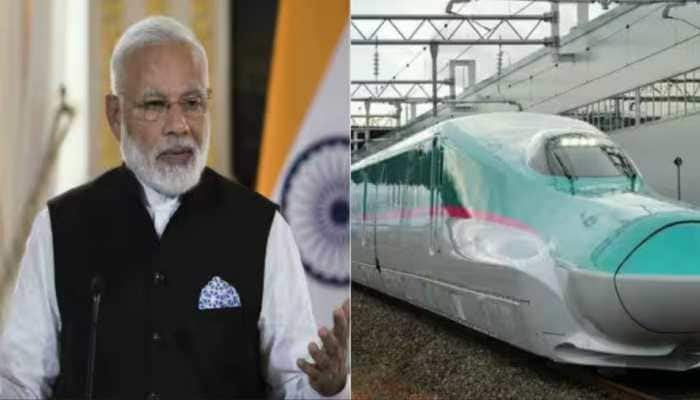Breaking The Cycle Of Poverty: Inspiring Success Stories And Effective Strategies
Discover powerful success stories and proven strategies that have helped break the cycle of poverty, offering hope and sustainable solutions for communities worldwide.
- Poverty is a complex web of factors such as inadequate education, poor health care, lack of employment opportunities
- Breaking the cycle of poverty requires a combination of innovative strategies and sustained efforts
- For many rural communities, agriculture is a primary source of income
Trending Photos
) Pic Credit: Freepik
Pic Credit: Freepik Poverty is a global challenge affecting millions, perpetuating cycles of deprivation across generations. While the problem may seem overwhelming, numerous success stories and innovative strategies have demonstrated that breaking the cycle of poverty is possible. From grassroots efforts to policy interventions, many approaches have helped lift individuals, families, and entire communities out of poverty. This article explores some of these stories of triumph and examines effective strategies for poverty alleviation.
Understanding the Poverty Cycle
Poverty is more than just a lack of income; it is a complex web of factors such as inadequate education, poor health care, lack of employment opportunities, and social exclusion. The cycle of poverty persists when these issues are passed from one generation to the next, making it difficult for individuals to escape. Breaking this cycle requires a multi-dimensional approach that tackles the root causes of poverty while providing opportunities for growth and development.
Success Stories: Inspiration from Around the World
1. The Grameen Bank – Microcredit in Bangladesh
One of the most famous success stories in the fight against poverty is the Grameen Bank, founded by Nobel Laureate Muhammad Yunus in Bangladesh. The bank pioneered the concept of microcredit, providing small, collateral-free loans to poor individuals, particularly women, to start small businesses. Since its inception, Grameen Bank has empowered millions of people to improve their economic standing by offering financial independence through entrepreneurship. This model has since been replicated in various countries, proving that access to credit can be a powerful tool in alleviating poverty.
2. Kenya's Mobile Banking Revolution – M-Pesa
In Kenya, poverty was exacerbated by limited access to banking services, especially in rural areas. The introduction of M-Pesa, a mobile-based money transfer and banking service, revolutionized financial inclusion in the country. M-Pesa allowed millions of previously unbanked individuals to send, receive, and save money using their mobile phones. This innovation not only improved financial security for many low-income families but also helped small businesses thrive. Today, M-Pesa is considered a global model for mobile banking and financial inclusion.
3. Brazil's Bolsa Família – Conditional Cash Transfers
Brazil’s Bolsa Família program is a well-known example of how government intervention can reduce poverty on a large scale. The program provides conditional cash transfers to low-income families, contingent upon their children attending school and receiving vaccinations. This approach addresses immediate financial needs while ensuring long-term benefits like better education and health care. Bolsa Família has been credited with lifting millions of Brazilians out of poverty and reducing inequality in the country.
Effective Strategies to Break the Cycle of Poverty
1. Education as a Pathway Out of Poverty
One of the most reliable ways to break the poverty cycle is through education. By investing in quality education, especially for marginalized communities, children and young adults can acquire the skills necessary for better employment opportunities. Education empowers individuals to make informed choices, contributing to better health, economic independence, and a more equitable society. For example, programs like India’s "Midday Meal Scheme" provide free meals to schoolchildren, ensuring their attendance and improving their nutrition, helping them break free from the cycle of poverty.
2. Social Protection and Safety Nets
Social protection programs, such as unemployment benefits, food assistance, and healthcare subsidies, provide a safety net for vulnerable populations. These programs help individuals survive economic shocks like job loss or illness, preventing them from falling deeper into poverty. Countries like Rwanda have developed robust social protection systems, helping citizens recover from poverty caused by crises such as civil unrest and disease outbreaks.
3. Women’s Empowerment
Empowering women is a critical strategy in the fight against poverty. Research shows that when women have access to education, healthcare, and economic opportunities, entire communities benefit. Initiatives like microfinance programs specifically targeted at women, gender-equality laws, and access to reproductive health services have helped countless women lift themselves and their families out of poverty. Projects like "Self-Employed Women’s Association" (SEWA) in India empower women through collective bargaining and employment opportunities, improving their financial stability and societal status.
4. Investing in Healthcare
Health and poverty are deeply intertwined. Without access to affordable healthcare, individuals in poverty often fall deeper into economic despair due to medical expenses or loss of income due to illness. Strengthening healthcare systems, offering health insurance, and addressing malnutrition are vital components of poverty alleviation. For example, Ethiopia’s Community Health Worker Program trains locals to provide basic healthcare services in rural areas, improving overall community health and reducing healthcare-related financial burdens.
5. Sustainable Agriculture and Access to Land
For many rural communities, agriculture is a primary source of income. Ensuring access to land, providing agricultural training, and introducing sustainable farming practices can greatly reduce poverty in these areas. In Africa, the "One Acre Fund" has helped farmers increase their yields through training and access to resources like seeds and fertilizers. This initiative has improved food security and increased the incomes of many farming families.
The Role of International Cooperation
While local initiatives are essential, international cooperation is equally important in addressing global poverty. International organizations, such as the United Nations, the World Bank, and non-governmental organizations (NGOs), play critical roles in funding, research, and implementing poverty reduction programs. Global goals, such as the UN's Sustainable Development Goals (SDGs), focus on eradicating poverty, improving education, and promoting gender equality as part of their mission to create a more just world.
A Collective Effort to End Poverty
Breaking the cycle of poverty requires a combination of innovative strategies, sustained efforts, and collective action. Whether through education, financial inclusion, social protection, or healthcare, the stories and strategies highlighted above demonstrate that change is possible. Success requires commitment from governments, communities, international bodies, and individuals alike.
The fight against poverty is not just about improving economic conditions but about providing dignity, opportunity, and hope to all. By learning from successful models and adapting strategies to local contexts, the global community can make significant strides toward a world where poverty is a thing of the past.
Stay informed on all the latest news, real-time breaking news updates, and follow all the important headlines in india news and world News on Zee News.
Live Tv







)
)
)
)
)
)
)
)
)
)
